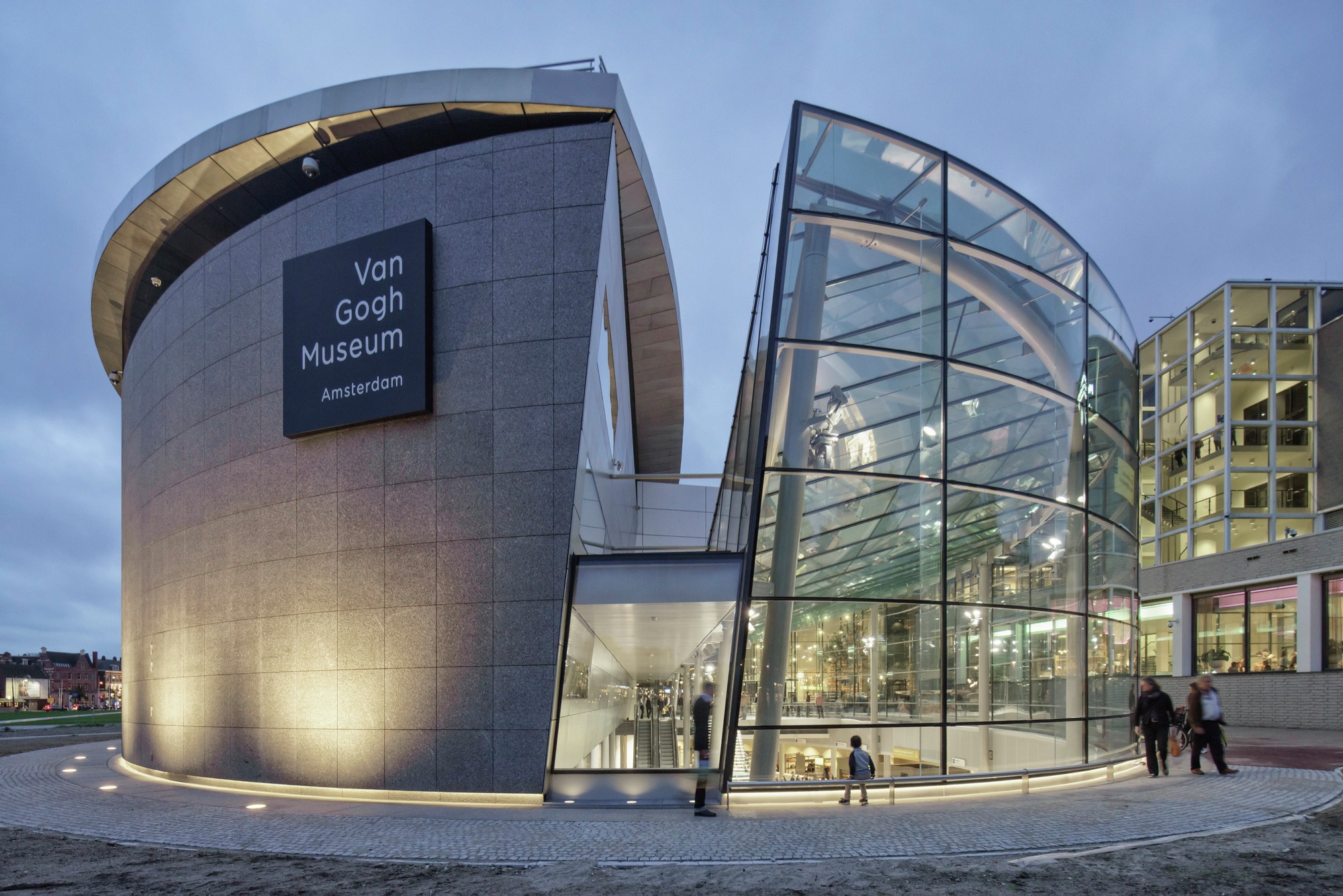
Van Gogh Museum, Amsterdam
The Van Gogh Museum is a Dutch art museum dedicated to the works of Vincent van Gogh and his contemporaries in the Museum Square in Amsterdam South. The museum opened on 2 June 1973, and its buildings were designed by Gerrit Rietveld and Kisho Kurokawa.
Upon Vincent van Gogh's death in 1890, his work not sold fell into the possession of his brother Theo. Theo died six months after Vincent, leaving the work in the possession of his widow, Johanna van Gogh-Bonger.[8] Selling many of Vincent's paintings with the ambition of spreading knowledge of his artwork, Johanna maintained a private collection of his works. The collection was inherited by her son Vincent Willem van Gogh in 1925, eventually loaned to the Stedelijk Museum in Amsterdam, where it was displayed for many years, and was transferred to the state-initiated Vincent van Gogh Foundation in 1962.
Dedicated Museum
Design for a Van Gogh Museum was commissioned by the Dutch government in 1963 to Dutch architect and furniture designer Gerrit Rietveld. Rietveld died a year later, and the building was not completed until 1973, when the museum opened its doors. In 1998 and 1999, the building was renovated by the Dutch architect Martien van Goor, and an exhibition wing by the Japanese architect Kisho Kurokawa was added. In late 2012, the museum was closed for renovations for six months. During this period, 75 works from the collection were shown in the Hermitage Amsterdam.
The museum contains the largest collection of Van Gogh's paintings and drawings in the world. The museum houses 200 paintings, 400 drawings, and 700 letters by the artist. In 2017, the museum had 2.3 million visitors and was the most-visited museum in the Netherlands, and the 23rd-most-visited art museum in the world. In 2019, the Van Gogh Museum launched the Meet Vincent Van Gogh Experience, a technology-driven "immersive exhibition" on Van Gogh's life and works, which has toured globally.